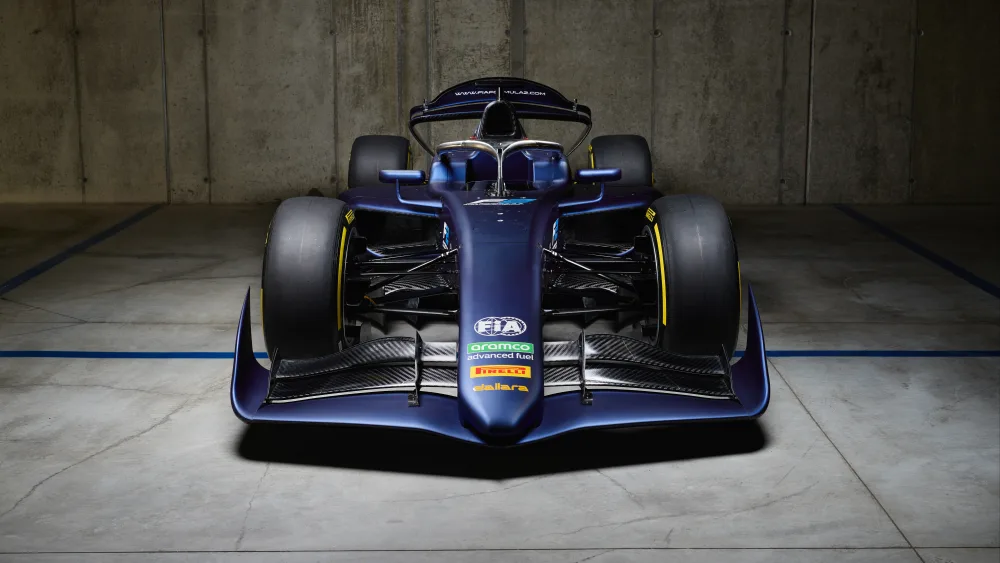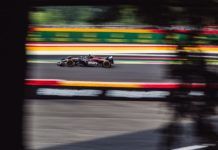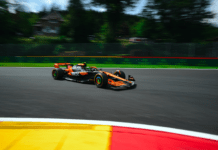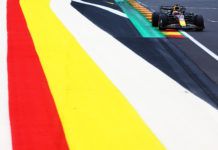F2 shares insights on he development work behind the 2024 car as testers Tatiana Calderon and Felipe Drugovich share their thoughts too.
With post-season testing at Yas Marina Circuit serving as the sendoff to the F2 2018 car, work is already well underway with a view to next year and the introduction of the new 2024 machine. Featuring fully revamped bodywork, overhauled cockpit ergonomics to increase driver safety, the 2024 car has been put through its paces around the world, with a shakedown in Italy, an initial test around Magny-Cours, France and then performance runs at the Circuito de Jerez in Spain.
A four-day test in Bahrain around the Sakhir International Circuit followed and was hugely positive from an engineering and driver perspective. F2 Deputy Technical Director Pierre-Alain Michot explains what the test entailed and why there are plenty of positive signs ahead of competitive racing next year. “The test in Bahrain was all about making sure the car was compliant with all our expectations in terms of performance, behaviours, just ticking all the boxes in the development programme.
“We did nearly 5000km, ending just 7km short of that figure, which is a shame, but to be able to achieve that across several different sessions around Magny-Cours, Jerez and Bahrain is good. In the tests, we’ve made sure that when the car is running, it is keeping cool enough for all the systems to be in the working range. In Bahrain, we didn’t have less than 30 degrees and the car was behaving and responding as expected.”
One of the drivers at the wheel during the test in Sakhir, Tatiana Calderon was all smiles as she put the F2 2024 machine through its paces. Beyond the aesthetics of the new F2 car, there has been a huge amount of work on the internals, particularly focusing on the driver cockpit. Moved in line with the latest FIA safety specifications, the new 2024 cockpit is designed to fit drivers of all sizes. Extensive work at Dallara has gone into producing a driving environment that suits the shortest and tallest of drivers that may enter the Championship in the coming years.
It‘s immediately apparent at the wheel according to Calderon, who says that the changes have brought a major increase to driver confidence within the cockpit, enabling them to reach the absolute limits of performance more quickly. “The feeling in the car has improved a lot. It’s been really good to work with F2 and Dallara in the development of the car,” says Calderon. “It’s easy to fit in, steer well and once the performance is there, explore the maximum. It’s been hugely positive and is a big step forward for women drivers.”
Having had recent experience with the current generation of F2 car, Calderon is expertly placed to provide feedback in terms of driving characteristics and comparisons between old and new. It’s the less visible changes that are the biggest for the drivers according to the Colombian, who says that it all feeds into how quickly a driver feels comfortable enough to push the car, and therefore improve their performance. It should all combine to make for an even closer wheel-to-wheel spectacle she says.
“It’s hugely important because if you’re not comfortable, you’re never going to be on the limit. You need to be focused on the setup of the car, not about your seat and being comfortable or worrying about your training. Once that is happening, it’s too late, you can’t just focus on the important stuff. The second step is the physicality of the car. Usually, you can’t extract the maximum performance right away, but the new car is very different. It usually takes me a day or two to feel out the car properly, but with this one it took two hours, and I was already focusing on areas to maximise performance. That’s going to be huge.
“It felt very similar to the previous car in terms of pure performance, but the feeling of the steering and the way the car steers in the different configurations makes this the biggest area of improvement compared to the old car. F2 races are already the most fun to watch and you see a lot of overtaking. I think it will be interesting to see the effect of the new car. It will open up opportunities for all teams and drivers to make competition even closer! I will be watching next year with great interest and hope I can race this new car at some point in the future.”
Likewise, from an engineering and technical perspective, ensuring the car is corresponding correctly to expectation is vitally important, especially around a circuit that the Championship visits in-season. The tests included running the different downforce configurations that will be in action next season, from the high-downforce profile used around the most aerodynamically demanding venues on the calendar, to the low downforce specification reserved for places like Baku and Monza. All the gathered data matched up to expectations.
Michot added: “It’s quite important because Bahrain is quite representative for a lot of parameters we’ll see across the season. We’ve been able to validate the behaviour of the car, which is always the most difficult thing to do with a new car. We mainly ran the medium and high-downforce specifications, but we did do a couple of runs with the low downforce configuration, Baku and Monza spec. It all went as expected and the car is balanced, correlating with our expectations.”
Calderon was joined by 2022 Formula 2 Champion, Felipe Drugovich, as the Brazilian carried out several days of testing also. With three season’s worth of experience in the 2018-2023 generation of F2 car, the most recent of which coming in his crowning campaign, Drugovich says the new car is similar in terms of feeling behind the wheel but should promote even closer racing.
“I think it feels very similar, the chassis is close, also the aero levels. It’s a new way of producing downforce, so the teams need to study that more and how to get more downforce with the car, running the ride height in the right spot. The car is probably going to be as fast as the 2022 car. Hopefully the racing will be a bit better. Normally you lose a bit less downforce with this type of aero, so it should race a bit better.”
With the focus on generating downforce underneath the car as opposed to the current methodology, it could shake up the F2 order as teams learn how to get the best out of the 2024 generation car and drivers learn how to manage the tyres and extract the maximum performance. “It’s good for the Championship, could mix things up quite a bit,” Drugovich says. “The chassis is similar in the way they run it but because of the aero, Teams will have to understand the new concept and find the best compromises between the mechanical and aerodynamic set-ups.
“It will change things up, teams will have to relearn how to set things up and use this car, tyre degradation might be different too because you could be able to follow a bit closer to the guys in front.” With the 2023 campaign in the books, the new era of Formula 2 is edging closer and closer. It promises to be a hugely exciting year for all the drivers and anyone watching the action.
[Note: The story is as per press release]



















